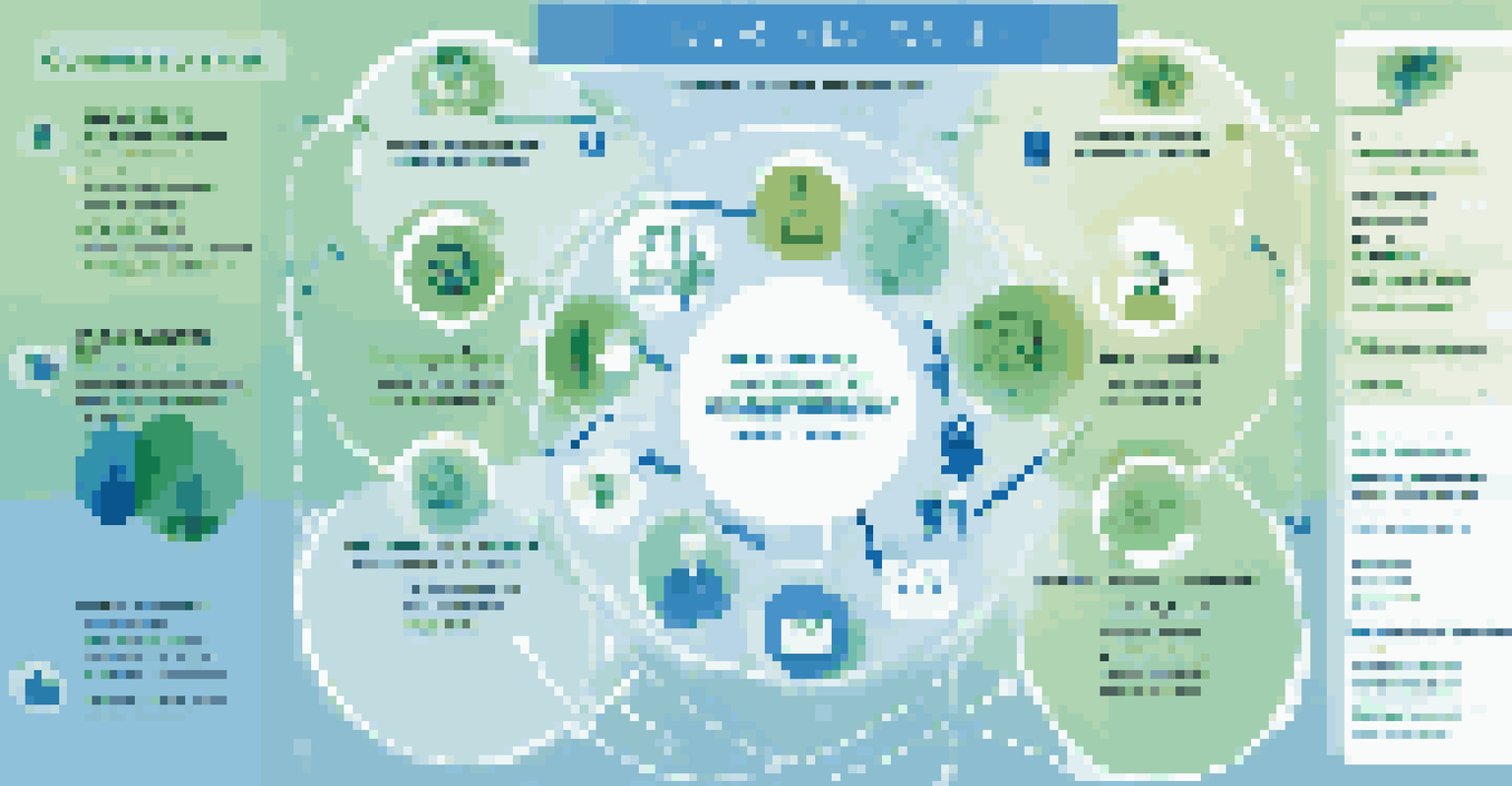Stakeholder Involvement: Engaging for Better Risk Outcomes

Understanding Stakeholder Involvement in Risk Management
Stakeholder involvement is a crucial element in effective risk management. By definition, stakeholders are individuals or groups that have an interest in the outcome of a project or decision. Engaging these parties not only helps in identifying potential risks but also fosters a collaborative environment for problem-solving.
Engagement is about understanding the needs and perspectives of stakeholders to create a shared vision.
For instance, consider a construction project where community members express concerns about environmental impact. By involving these stakeholders in discussions, project managers can address issues upfront, leading to more sustainable outcomes. This collaboration can ultimately reduce the likelihood of disputes down the road.
Moreover, when stakeholders feel heard and valued, they are more likely to support the project's goals. This support can manifest in various forms, from providing resources to advocating for the project in wider circles, making stakeholder engagement a win-win situation.
The Benefits of Engaging Stakeholders Early
Engaging stakeholders early in the risk management process can significantly enhance project success. Early involvement allows stakeholders to voice concerns and contribute ideas, which can lead to the identification of risks that may have been overlooked. This proactive approach helps in crafting more comprehensive risk management strategies.

For example, in a technology rollout, involving end-users in the planning phase can reveal potential usability issues. Addressing these concerns before launch not only mitigates risks but also ensures a smoother transition and greater user satisfaction. It’s much easier to solve problems collaboratively at the start than to backtrack later.
Engage Stakeholders Early
Involving stakeholders at the start of a project helps identify risks early and fosters a supportive environment.
Additionally, early engagement builds trust among stakeholders. When they see their input valued from the beginning, they are more likely to remain engaged and supportive throughout the project lifecycle, contributing to a more resilient risk management framework.
Techniques to Effectively Engage Stakeholders
There are several effective techniques for engaging stakeholders in the risk management process. One popular method is conducting workshops or brainstorming sessions, where stakeholders can share their insights and experiences. This interactive setting encourages open communication and generates diverse perspectives on risk.
The most important thing in communication is hearing what isn't said.
Another approach is to use surveys and questionnaires to gather feedback from a broader audience. This method allows for anonymous input, which can often yield more honest and candid responses. Analyzing this data can provide valuable insights into stakeholder concerns and expectations.
Lastly, maintaining ongoing communication through regular updates and feedback loops is essential. By keeping stakeholders informed of developments and changes, you create a sense of ownership and commitment to the project, making them more likely to engage actively.
Challenges in Stakeholder Engagement
While engaging stakeholders is beneficial, it does come with its own set of challenges. One common hurdle is the diverse range of stakeholder interests and priorities, which can lead to conflicts. Balancing these differing perspectives requires skilled facilitation and negotiation.
For instance, in a public infrastructure project, local businesses may prioritize economic benefits, while environmental groups focus on sustainability. Addressing these competing interests can be tricky, but finding common ground is essential for a successful outcome. It often requires compromise and creativity to ensure that all voices are heard.
Build Trust Through Transparency
Transparent communication about decisions and risks strengthens relationships and encourages collaborative problem-solving.
Additionally, time constraints can pose a significant challenge. Engaging stakeholders effectively takes time and resources, which can be hard to allocate in fast-paced environments. However, prioritizing stakeholder engagement can ultimately save time and resources in the long run by preventing issues that arise from lack of communication.
Building Trust Through Transparency
Transparency is a key factor in building trust among stakeholders. When stakeholders are kept in the loop about decisions and changes, they feel more secure in the process. This sense of security is vital for fostering a collaborative atmosphere where everyone is willing to share their insights.
For example, if a project encounters an unforeseen risk, openly communicating this to stakeholders can help maintain trust. Instead of feeling blindsided, stakeholders appreciate being informed and involved in finding solutions. This transparency not only strengthens relationships but can also lead to innovative problem-solving.
Furthermore, establishing clear communication channels, such as newsletters or dedicated online platforms, can enhance transparency. These tools allow stakeholders to easily access information and updates, reinforcing their sense of involvement and commitment to the project.
Measuring the Impact of Stakeholder Engagement
Measuring the impact of stakeholder engagement can be challenging, yet it's crucial for assessing the effectiveness of your efforts. One way to gauge success is to track key performance indicators (KPIs), such as stakeholder satisfaction, project timelines, and risk mitigation effectiveness. This data provides concrete evidence of the benefits of engagement.
For instance, if stakeholder feedback leads to changes that reduce project delays, this can be a clear indicator of successful engagement. Regular surveys can also help measure stakeholder perceptions and identify areas for improvement. The more you understand the impact of your engagement strategies, the better you can refine them.
Measure Engagement Impact
Tracking key performance indicators can help assess the effectiveness of stakeholder engagement in risk management.
Additionally, conducting post-project evaluations can provide insights into how stakeholder involvement influenced outcomes. By analyzing both qualitative and quantitative data, organizations can make informed decisions for future projects, reinforcing the value of stakeholder engagement in risk management.
Looking Ahead: The Future of Stakeholder Engagement
As we move forward, the importance of stakeholder engagement in risk management will only continue to grow. In a world where projects are becoming increasingly complex and interconnected, collaborative approaches will be essential for navigating risks effectively. Embracing new technologies can also enhance stakeholder engagement.
For example, virtual collaboration tools can facilitate real-time communication and input from stakeholders across various locations. This accessibility can broaden participation and ensure that diverse perspectives are included, leading to better risk management outcomes. The future is about leveraging technology to empower stakeholder voices.

Ultimately, investing in stakeholder engagement is investing in the success of your projects. By fostering a culture of collaboration and transparency, organizations can build resilient systems that not only manage risks but also create lasting value for all involved.